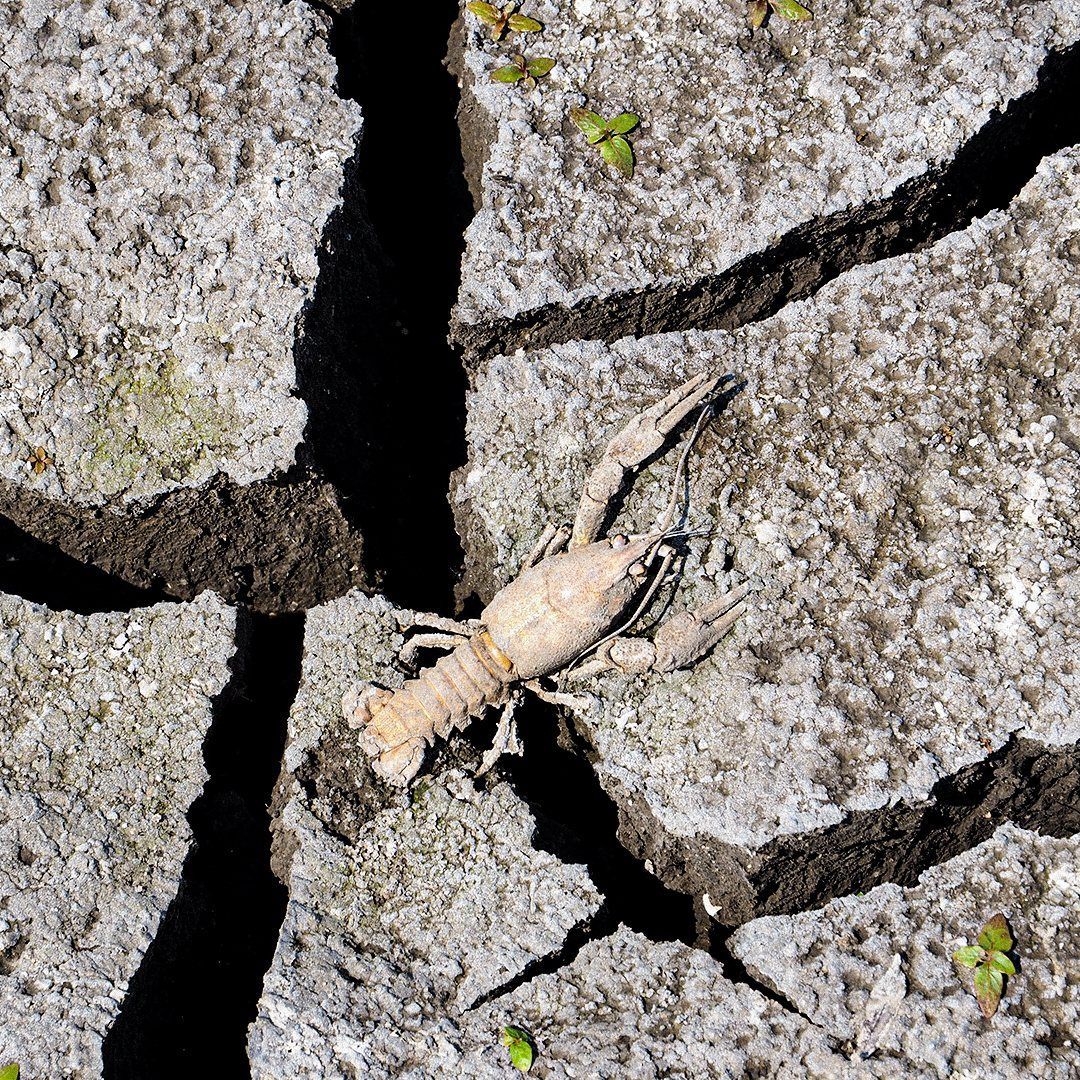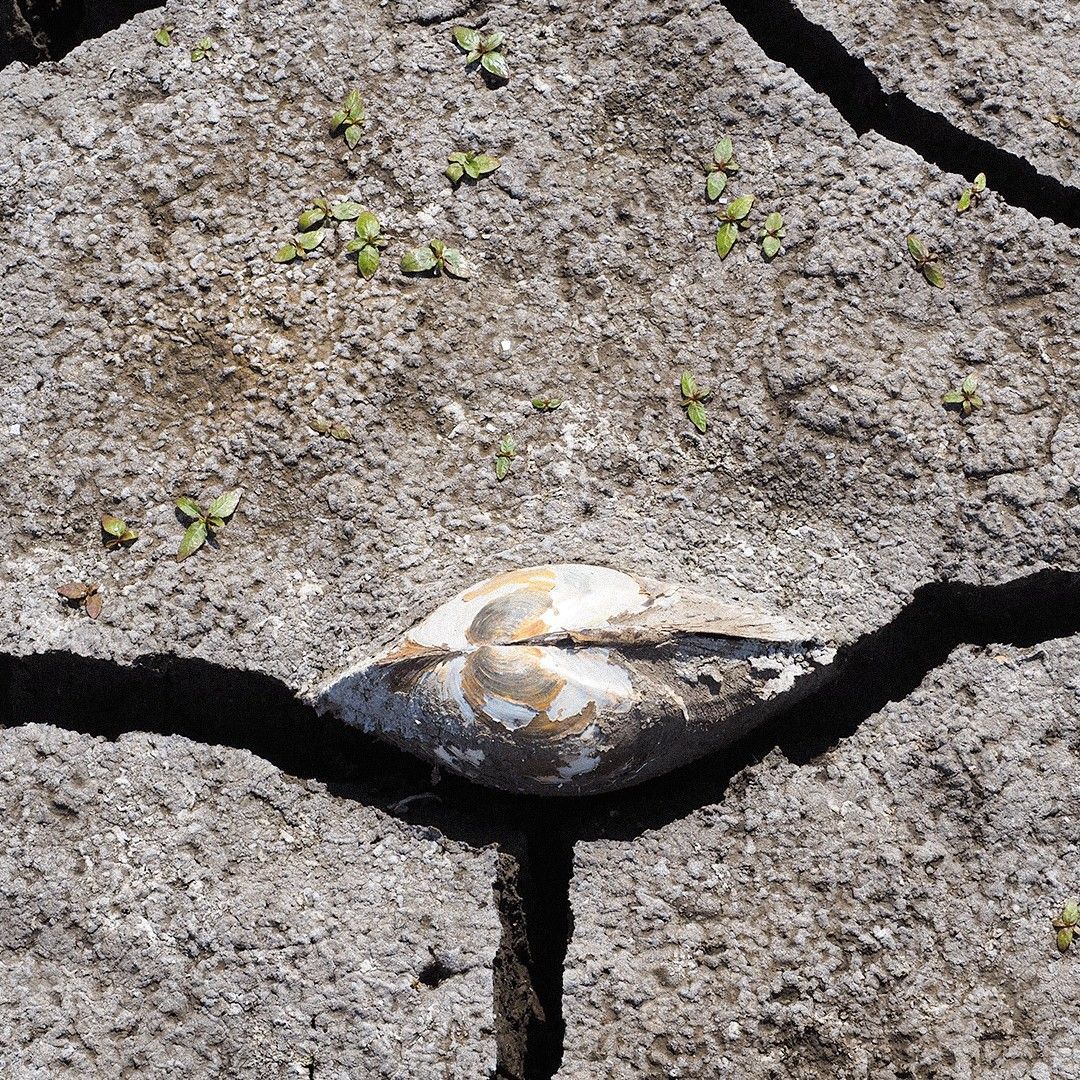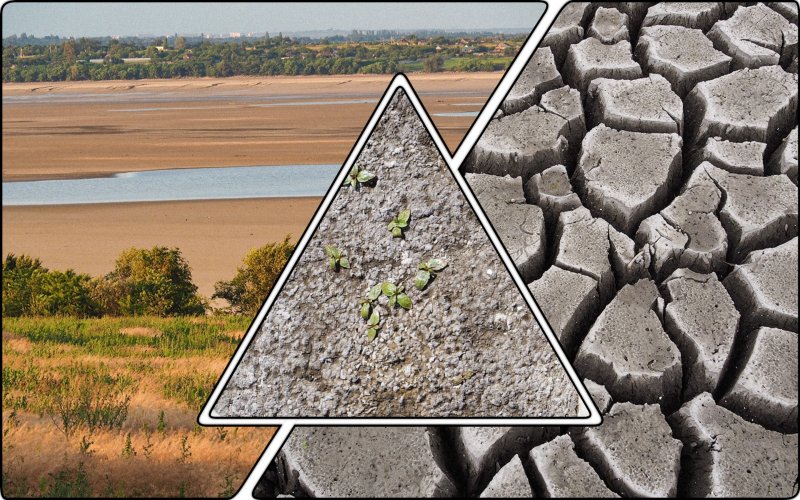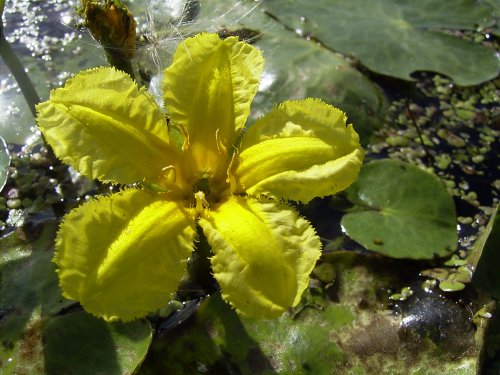At the bottom of the Kakhovsky Reservoir, the first sprouts of plants appeared, which are still too small to be identified.
They were discovered by eco-activists from the "Ukrainian Nature Protection Group" community, who investigated the territory of the Kamianska Sich National Nature Park, says the UPG Facebook page.

It is noted that more than 200,000 hectares of land were exposed due to the explosion of the Kakhovska HPP. Such an event can be compared to the sudden retreat of a glacier.

The report said that during the expedition it was possible to:
- to investigate the stages of overgrowth of the dry bottom of the Kakhovsky Reservoir and to study the species composition of seedlings under different conditions and at different distances from the shore;
- lay four plots for monitoring biodiversity in different types of ecosystems of the bare bottom of the reservoir;
- take soil samples from the bottom to study algae, viruses and bacteria, as well as its chemical composition and physical properties.

Eco-activists explained that it was not possible to take samples from all areas due to the danger of shelling. After all, in some places the width of the reservoir bed, that is, the distance to the occupiers, reaches 4-5 kilometers.
"In general, the picture is impressive. Before that, we saw a lot of photos and videos, but they do not convey the scale of the disaster, – stressed the UPG. – All water organisms suddenly died, and there are no terrestrial ones yet (more precisely, only the first sprouts have already begun to appear). At the bottom of the reservoir to the horizon, we saw a dry bottom with separate water bodies, devoid of any vegetation. Today it looks like a huge desert."

They added that scientists are debating the future of reservoir ecosystems. There are assumptions that the territory will be captured:
- invasive species;
- tree species;
- the steppe may partially recover.
"Quasi-natural (as close as possible to natural) communities should be restored at the site of the reservoir," eco-activists shared.
Earlier, EcoPolitic wrote, that due to the explosion of the Kakhovskaya HPP, the national nature parks "Veliky Lug" and "Kamyanska Sich" in Zaporizhzhia are gradually turning into a desert.
As EcoPolitic previously reported, in Zaporizhzhia, after the Russians blew up the Kakhovskaya HPP, water disappeared from the Dnipro Reservoir, which is in the area of the Dnipro HPP.





